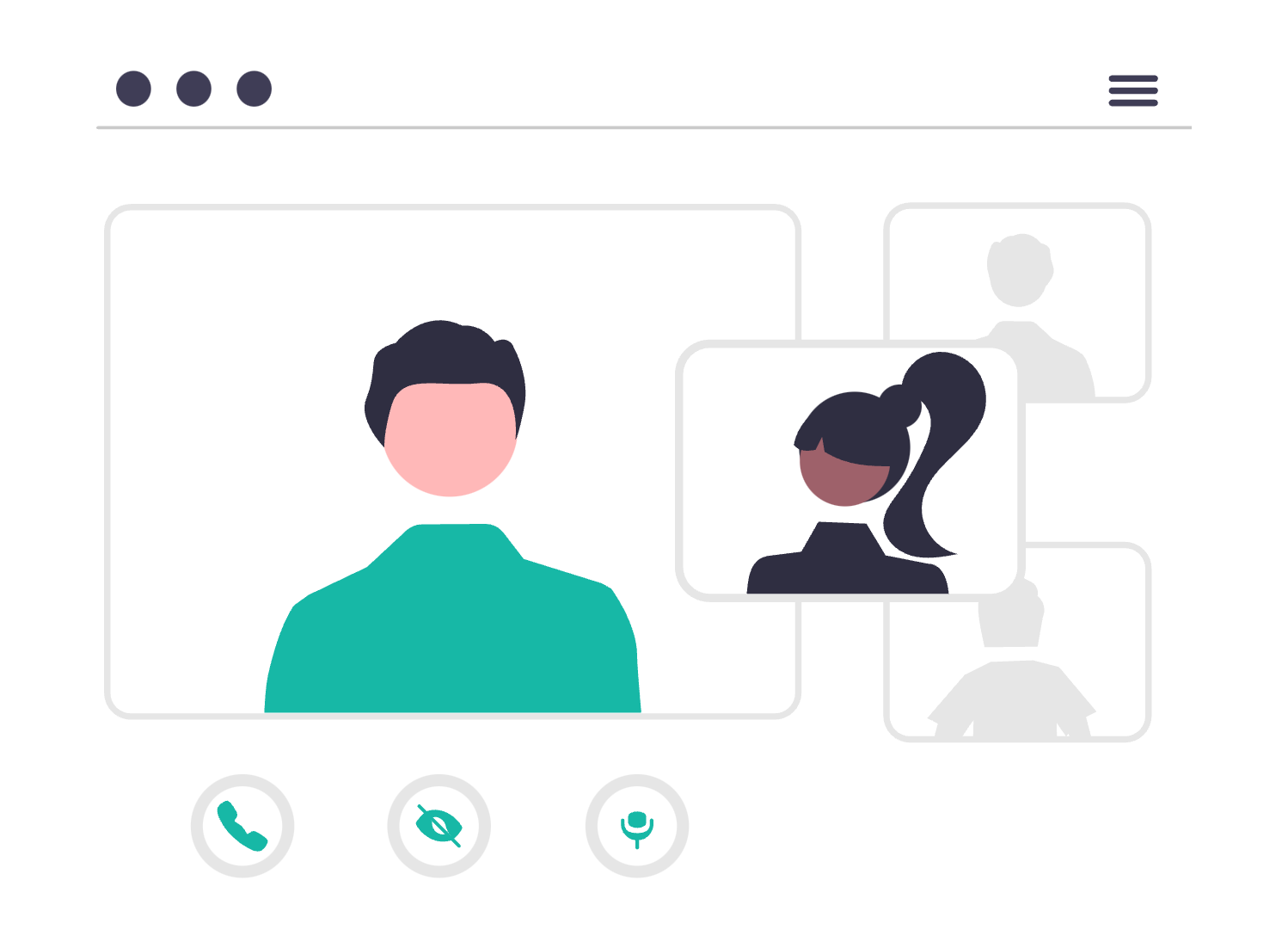
When designing a basic one-on-one video chat or a large-scale conferencing system, selecting the most suitable call type can influence performance, scalability, and user experience is one of the most important things to do.
ConnectyCube provides two primary call types through its API: Peer-to-Peer (P2P) calls and Conference calls. While both enable real-time video and audio communication, they serve different purposes and come with unique technical considerations.
What are P2P calls?
P2P calls establish a direct connection between two participants without relying on a central media server for audio and video streaming. This approach offers several benefits, including:
- Lower latency due to direct data transmission.
- Optimized bandwidth usage, as media streams do not pass through a relay server.
- Cost efficiency, since no additional server resources are required.
However, P2P calls may face challenges in network-restricted environments where firewalls and NAT traversal issues arise. Additionally, they are inherently limited to one-on-one communication, making them unsuitable for multi-party interactions.
What are Conference calls?
Conference calls use a central media server to manage and distribute audio and video streams among multiple participants. This setup is ideal for group calls and large-scale meetings, offering:
- Scalability – allowing many users to join the same session.
- Stable connectivity -as the server handles media routing even in network-restricted environments.
- Advanced moderation features -such as participant management and recording.
While conference calls provide greater flexibility, they require additional server resources, leading to increased operational costs compared to P2P calls. Additionally, there may be slightly higher latency due to media processing on the server side.
Comparison of P2P and Conference calls
Below is a comparison table highlighting the key differences between P2P and Conference calls provided by ConnectyCube:
| P2P | Conference calls | Conference calling – Guest room |
|
| Max people per call | 4 | 12 | |
| Authorization required | yes | yes | no |
| Server involvement | no | yes | yes |
| Join by link | no | yes | yes |
| Add/remove occupants | no | yes | yes |
| Participants roles | no | yes (host / guest) |
yes (host / guest) |
| Switch camera | yes | yes | yes |
| On/Off camera | yes | yes | yes |
| Switch audio output | yes | yes | yes |
| Mute/Unmute mic | yes | yes | yes |
| get cameras / audio inputs and outputs list | yes | yes | yes |
| Monitoring mic level and video bitrate using Stats | yes | yes | yes |
| Call quality – Limit bandwidth | yes | yes | yes |
| Recording support | yes (client side only) | yes | yes |
| Screen Sharing | yes | yes | yes |
| Custom backgrounds | no | no* | no* |
| Simulcasting | no | no* | no* |
| Call duration limit | Configurable | Configurable | Configurable |
| Data consumption | Moderate to High (depends on media quality and server load) |
Low to Moderate (depends on media quality and server load) |
Low to Moderate (depends on media quality and server load) |
| Integration with other features | full (chat, presence, etc.) | full (chat, presence, etc.) | full (chat, presence, etc.) |
| Mobile & Web support | yes | yes | yes |
| Cost efficiency | high (no server costs) |
moderate (SFU cost supply) |
moderate (SFU cost supply) |
| Security** | best | good | good |
* for P2P calls – all the traffic goes P2P directly between all the parties, no intermediate server is involved.
For Conference calling – an SFU bridge is used in between participants.
** as with P2P calls all the traffic goes P2P directly between all the parties and w/o a server involvement hence security is the best.
Choosing the right call type for app
When deciding between P2P and conference calls, take a moment and think about how the application will function, who will be the users, what additional functionality will be required in future versions:
- Number of participants – P2P is best for one-on-one calls, while conference calls handle multiple users.
- Network conditions – if users may face firewall restrictions, conference calls provide a more reliable solution.
- Cost considerations – P2P calls minimize server costs, whereas conference calls require additional infrastructure.
- Feature requirements – conference calls offer enhanced moderation, screen sharing, and recording, which P2P lacks.
Finally to say
Both P2P and conference calls have their place in modern communication apps. P2P is a lightweight, cost-effective option for direct calls, while conference calls cater to large-scale collaboration and multi-user meetings. By understanding their strengths and limitations, developers can integrate the right solution into their applications and enhance user experiences effectively.
With ConnectyCube’s API, you have the flexibility to implement both call types, ensuring your app meets the needs of any communication scenario.
Ready to get started? Check out our documentation to learn more about setting up P2P and conference calls. Sign up for Free plan and try ConnectyCube on your app!
—
Join the ConnectyCube Discord сommunity for quick answers and expert tips

